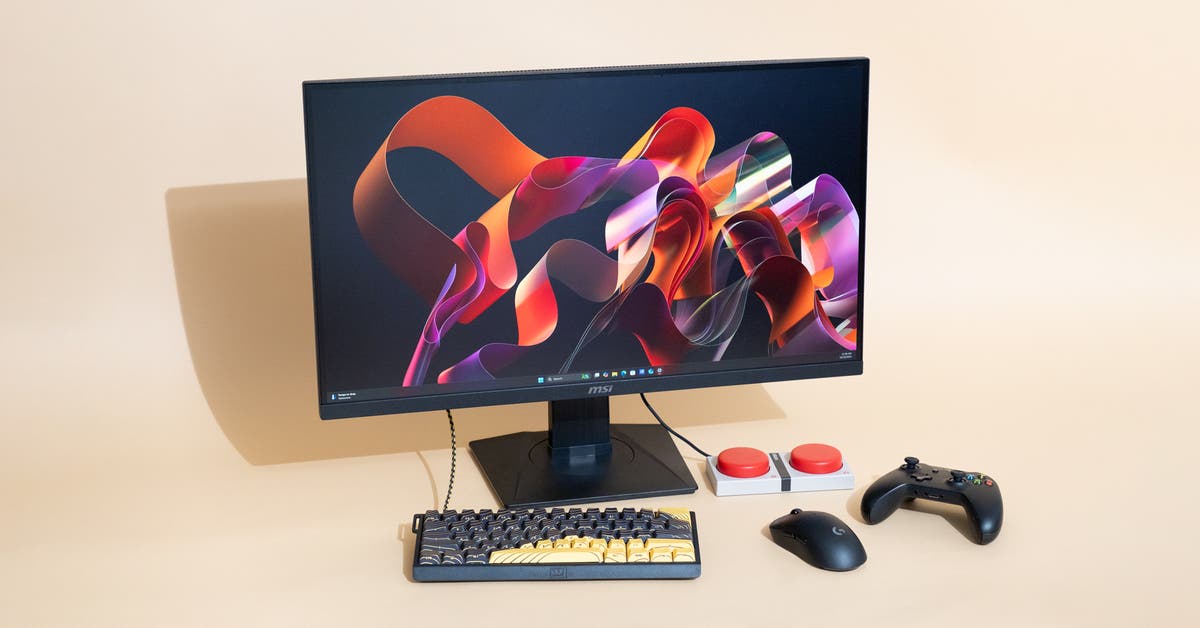The 4 Best Gaming Monitors of 2025
The Omen Transcend 32 is HP’s flagship 31.5-inch, 4K OLED gaming monitor, which is launching a little later than the competition. In the year since the first crop of 32-inch 4K OLED monitors were announced and released, they’ve dropped in price compared to the Transcend 32, making it a difficult monitor to recommend within the current market. It also has an enormous 480-watt power brick, by far the largest we’ve ever seen for a consumer monitor. The power brick alone weighs 3.8 lbs, and is larger than two Mac minis, which makes it difficult to hide it in or around your desk where you won’t kick it. It’s also difficult to mount on the underside of a desk because it’s so ridiculously heavy, and it was too thick to fit between our desk and the wall. We think our pick for 4K gaming, the Asus ROG Swift OLED XG27UCDMG, is still a better choice. However, the Transcend 32 has one standout feature: Its on-screen display, which shows settings and various functions of the monitor. HP has redesigned its OSD to be pleasant, informative, and helpful. These are not terms we would not use together to describe any other OSD we have tested, so we hope to see user-friendly redesigns like this become a trend in the future.
The Asus ROG Strix XG27ACS was a contender for our top pick but fell short of the MAG274QRF QD E2 in a few key areas, including contrast and motion clarity. Our tests of the XG27ACS showed contrast of 913:1, below our threshold for acceptable contrast on monitors that use IPS technology. Also, when gaming and testing for motion clarity, the XG27ACS had more noticeable ghosting than our top pick. These motion artifacts were present on both monitors, especially when bright objects move around the screen, but we found them less noticeable on the MSI. The MSI also gets about 100 nits brighter, and has 65 W of power delivery over USB-C (though that wasn’t part of our gaming criteria).
The Gigabyte Aorus FO32U2P is a 32-inch 4K gaming monitor we tested earlier this year, but found that the Asus ROG Strix XG27UCDMG had a brighter display and is more consistently in stock.
The MSI MPG 321URX is a great 4K, 32-inch OLED gaming monitor that would have been our 4K pick if it hadn’t had persistent stock issues throughout the year. MSI has also released the MSI MPG 321UPX, a less expensive version with a lower refresh rate and only 15 W of USB-C power delivery, which has also been chronically out of stock. We’ll test that monitor in an upcoming version of this guide and make an update if stock becomes steadily available for both monitors.
The Dell Alienware AW3225QF was one of the first available 32-inch 4K OLED monitors, and it’s oriented toward PC gamers who want a curved OLED display. The Asus ROG Strix XG27UCDMG is brighter and has more features, including a USB-C port with power delivery.
The Sony Inzone M10S is a sharp, desk-worthy 27-inch 1440p OLED display that has a fast 480 Hz refresh rate. The monitor’s image quality is fantastic, and it’s perhaps the nicest-looking monitor we tested, but it’s too expensive for most people and couldn’t reach 250 nits of brightness in our testing.
The Sony Inzone M9 II is a 4K monitor that uses MiniLED technology, instead of IPS or OLED. This offered better contrast and color than IPS in our tests. But for gamers, we think that $800 would be better spent on a lower-resolution OLED display, which offers a better image than even MiniLED, without the additional tax on your graphics card from the increased 4K resolution.
The Gigabyte Aorus FO27Q2 is another competitively priced 27-inch, 1440p OLED gaming monitor that was a contender for the upgrade pick spot. The MSI MAG 271QPX QD-OLED E2 got about 40 nits brighter, which is noticeable at these low brightnesses, and was also slightly cheaper. Gigabyte has also released a FO27Q3 model, which has a 360 Hz refresh rate and is slightly more expensive, but we thought 240 Hz with a better price was a better value.
We tested the Titan Army P24H2P, P27A2R, and P32H2U gaming monitors and would not recommend monitors from the company based on our tests. All the monitors had poor contrast and brightness, with the P24H2P measuring the worst with a contrast of just 366:1.
This article was edited by Arthur Gies and Signe Brewster.






